One of my first posts in this blog was regarding the servicing of the Pioneer PL12D turntable, and that has proven to be the most popular by a significant margin. The Pioneer PL12D had its competitors, and probably the most popular alternative was the Trio Kenwood KD-1033 turntable. I use both names (Trio and Kenwood) as the company operated under different names in different markets. In the UK they were Trio, possibly because the brand Kenwood was most famous here for food blenders. 95% of a KD-1033 is similar to Pioneer PL12D, and servicing them is very much the same process. Both are belt drive , have an AC synchronous motor, mechanical speed change , a main bearing, sprung top deck and rubber motor mounts. the KD-1033 uses a different type of anti skate mechanism, employing a thread and weight. The plinth is shallower with an internal cross brace. One aspect that is different is the design of the main bearing, and servicing it is a little harder than a PL12D. The Pioneer main b
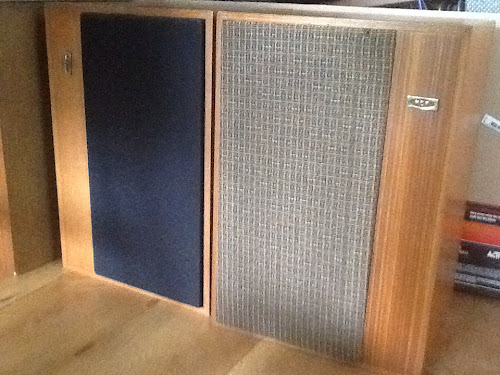 |
| Left had example is 1968 ( one of a pair). Right hand example is 1970 model ( one of pair) |
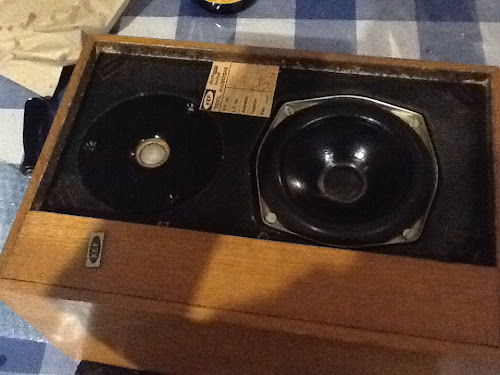 |
| With original failed T27 tweeters |
I purchased both pairs from a nearby charity shop where they looked a bit forgotten. Their styling is rather dated, or possibly retro 70s depending on your viewpoint. What makes them particularly interesting is that they were one of the first speakers to use the combination of the Kef T27 tweeter and B110 mid-range/woofer. This same combination was subsequently used in the Legendary LS3/5a speaker, which i also own a pair of. I was interested to see how they compared.
Of the two pairs, the earlier 1968 pair were slightly better made. The cabinets of both are chipboard, not the ply of the ls3/5a. The 1968 unit had black grilles and a better veneer. The 1970 unit had hessian grilles and a cheaper looking veneer, though again this may be down to the tastes of that era.
With two sons of college age i decided these speakers would work well for bedroom systems, especially as they don't look expensive .
On playing both pairs i found that the tweeters were blown in the earlier pair and this was confirmed when i removed them and put a multimeter in continuity mode across the wire tabs. Both open circuit.
I decided to move the tweeters from the later pair into the earlier ones, as they were in better condition and were visually more appealing.
Removing the drivers revealed the crossover which is a very simple affair , only 3 components - 2inductors and one 4 uF bipolar cap this is very different from the LS3/5 a crossover which has more than 15 components.
The 68 pair sounded very nice. Not much bass and none of the LS3/5a bass-hump but a good sound. I polished the cabinets and put these aside as the pair now working in original condition.
 |
| Note : tweeter already removed, nut crushed under woofer |
Worse, in removing one bass unit the spiked nut which the bolt from the front engages with, started to tuen, and in the end some of the chipboard around the hole broke away.
I pondered this but was determined not to discard these cabinets despite their age and chipboard construction.
With good advice from the always helpful diyaudio forum, especially member system7, i glued a plywood brace behind the broken hole and built it up with plastic wood. A good sand, then a quick spray of black paint and the speaker mounting recess looked as good as before. I got a new through bolt and its crown shaped nut which has spikes which pull and Dig into the wood from the back.
Next what to do about the tweeters. T27 are no longer made and command high prices. However Falcon acoustics sell a Morel CAT298 tweeter which is a drop in replacement even down to the screw hole positions, so i ordered a pair of these.
The B110 drivers had no indication of polarity, and while i had taken pictures during the strip down , i was a bit confused about their polarity. Once again diyaudio came to the rescue and i used a 1.5v AA battery , touching the two driver wires to it. I could see the polarity by way caused the speaker to push out rather than pull in.
 |
| Using an AA battery to determine driver polarity |
 |
| Original caps and blue alcap replacements |
 |
| Left hand unit is one of the 1968 pair with T27. Right hand example is one of the 1970 pair both of which got new Morel cat298 replacement drivers |
Well having replaced the bipolar cap in each speaker and checked the bass polarity, i did a bit of testing using iTunes, a T- amp and some familiar sources. Sound was very good. Treble still very sweet with the Morel, and the bass was good. Perhaps listening in the bay helped reinforce it but no problem with the bass in "Come Together" and the drum solo in "carry that weight". Much like LS3/5as in fact which is what you'd expect given similar cabinet volume and the same compliment of drivers.
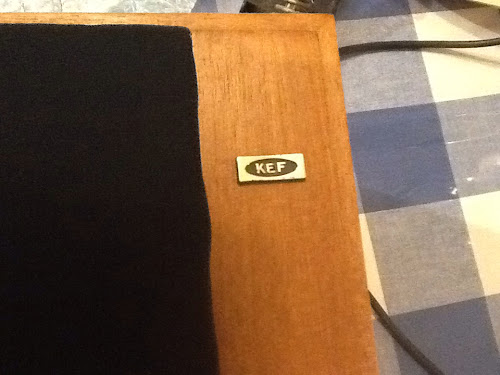



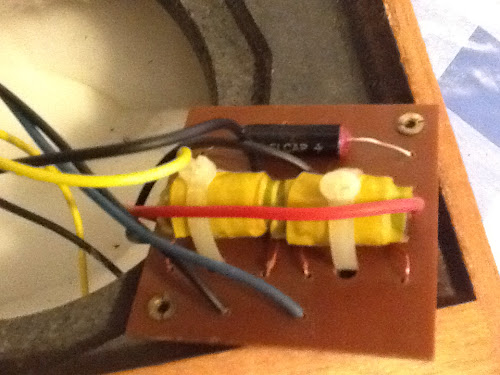

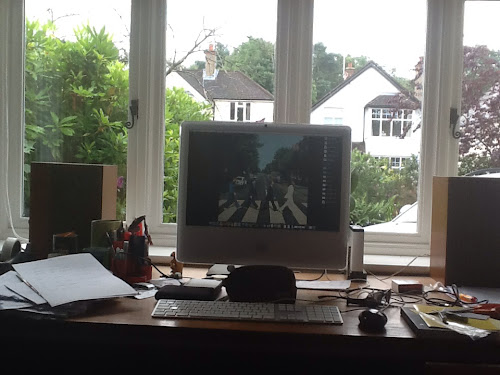
Comments